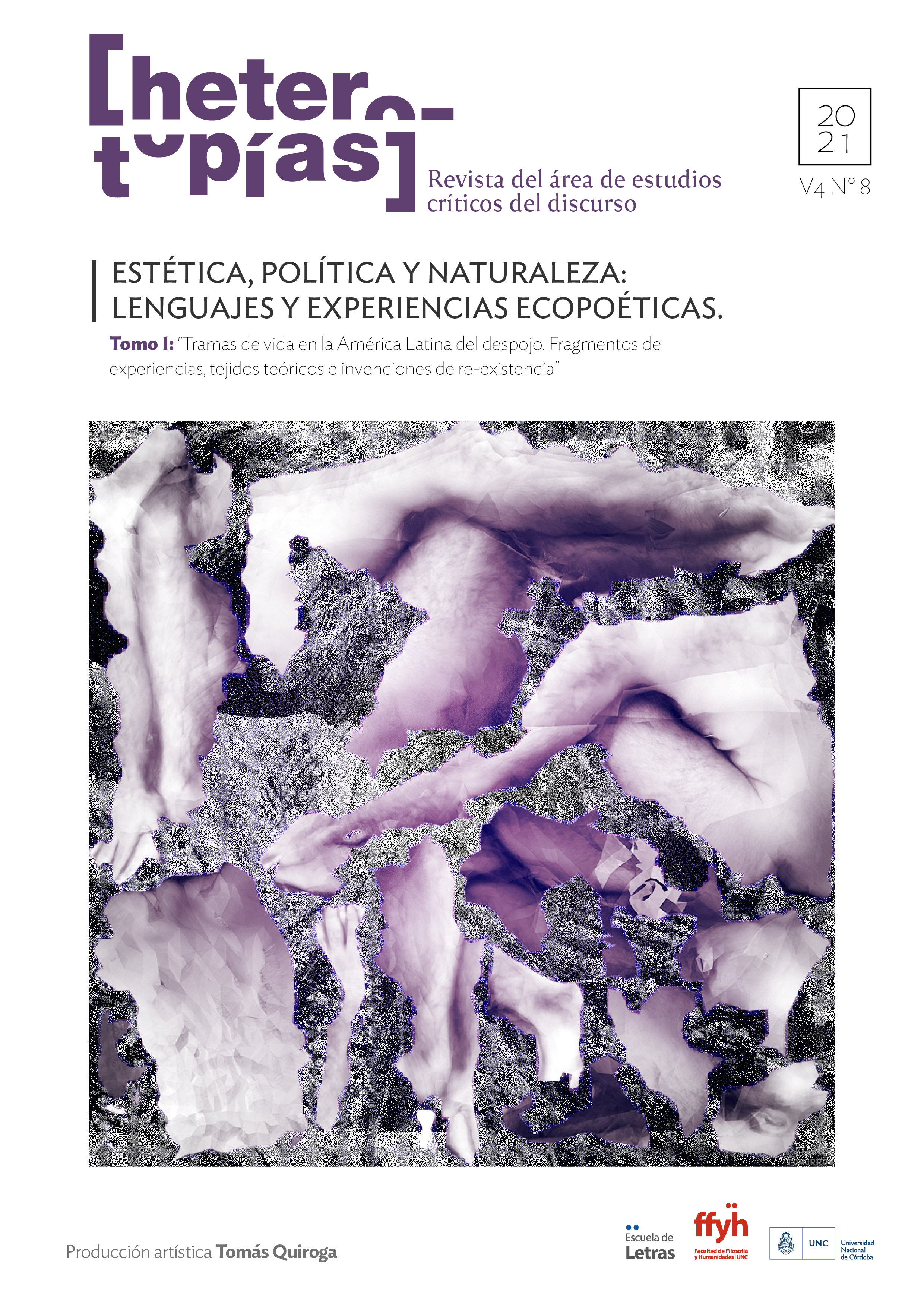The art of the irreparable in Fernando Foglino’s the burial
Main Article Content
Abstract
The work of the Uruguayan artist Fernando Foglino (Montevideo, 1976) revisits the past and confronts it with the iconic materiality of the sculptures of the urban landscape where he updates, in a playful and ironic way, a critique of the construction of national memory. The articulation between history, memory and urban monument raised in its installations questions the circulation of the past in the local imaginary. Coming from architecture, the artist is accustomed to working with computer models, which allows him to make 3D formalizations of the monuments that he intervenes a posteriori.
This proposal, which has been going on for more than a decade, would seem to be attentive to the temporalities that cross the particular iconography of the identity construction of a country seen from the perspective of contemporary art. The work that concerns us is the work El Entierro, exhibited in 2016 in the Hall of the Lost Steps of the Legislative Palace, within the framework of the 3rd Montevideo Biennial. My hypothesis is that Foglino manages, by giving volume to an ominous and inaccessible photograph that is in the archives of a newspaper, to transform its reception through fantastical visions that promote a reflective distancing.
The operation in this work, then, consists - through a distancing that in the words of Didi-Huberman would confront us with the notion of survival understood as "a specific expression of the footprint" that would be located "between ghost and symptom" - in bringing the two dimensions of the plane to the volumetric representation of 3D printing and then flattening them again on the screen of a closed circuit television (CCTV) and in a fairly simple a priori articulation, to open a wide associative constellation that transform the view of both, historical and contemporary events. This artist works on the trauma of the dictatorship and the multiple social violences of democracy, through the discursive deconstruction typical of the distancing caused by the gaze in the intervention of the well-known -and therefore invisible- in the city.
Downloads
Article Details

This work is licensed under a Creative Commons Attribution-NonCommercial-ShareAlike 4.0 International License.
Those authors who have publications with this journal, accept the following terms: Those authors who have publications with this journal, accept the following terms:
a. The authors will keep their copyright and guarantee to the journal the right of first publication of their work, which will be simultaneously subject to the Creative Commons Attribution - Non-Commercial - Share Alike (by-nc-sa) Attribution License; no commercial use of the original work or any derivative works is allowed, the distribution of which must be done with a license equal to the one that regulates the original work.
b. Authors may adopt other non-exclusive license agreements for the distribution of the published version of the work (e.g., deposit it in an institutional telematic archive or publish it in a monographic volume) provided that the initial publication in this journal is indicated.
c. Authors are allowed and recommended to disseminate their work through the Internet (e.g. in institutional telematic archives or on their website) before and during the submission process, which may lead to interesting exchanges and increase the number of citations of the published work. (See The effect of open access).
How to Cite
References
Apezteguia, M. J. (2020). Heridas de ciudad: rastros e indicios de la memoria y el patrimonio en la construcción de ciudadanías uruguayas contemporáneas. En Antonella Cancellier y María Amalia Barchesi (eds.) Teatro, prácticas y artes performativas del testimonio y la memoria. Nuevos paradigmas, formas, enfoques en las post-dictaduras del Cono Sur. (pp. 233-252) Padova: Cooperativa Libraria Editrice Università di Padova.
Didi-Huberman, G. (2011). Ante el tiempo. Historia del arte y anacronismo de las imágenes. Buenos Aires: Adriana Hidalgo Editora.
Didi-Huberman, G. (2017) Supervivencia de las luciérnagas. Madrid: Abada Editores.
Didi-Huberman, G. (2018). La imagen superviviente. Historia del arte y tiempo de los fantasmas según Aby Warburg. Madrid: Abada Editores.
Garramuño, F. (2016). Obsolencia, archivo. Políticas de la sobrevivencia en el arte contemporáneo. Cuadernos de Literatura, 20(40), 56-68.
Guasch, A. M. (2011). Arte y Archivo, 1920-2010 Genealogías, Tipologías y Discontinuidades. Madrid: AKAL/Arte Contemporáneo.
Robin, R. (2012). La memoria saturada. Buenos Aires: Waldhuter Editores.
PROYECTO CASAMARIO. (2020). Materiales. Proyecto CasaMario reside en Centro de Exposiciones Subte, Programa Pedagógico de Ediciones CasaMario, Montevideo: Ediciones CasaMario.
